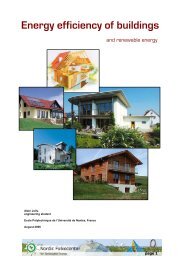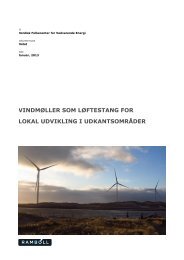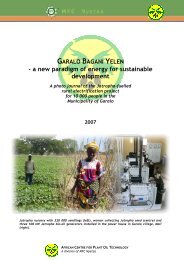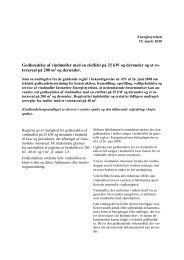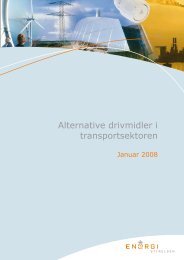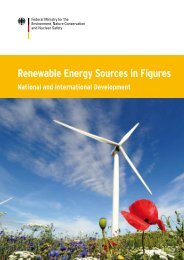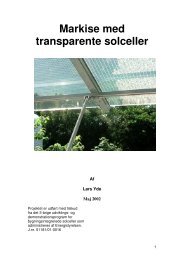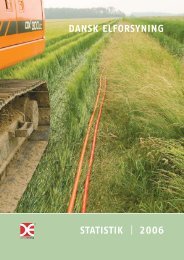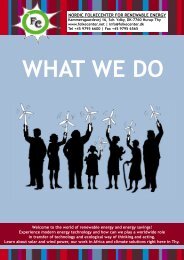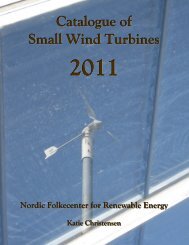Passivhuse i dansk kontekst
Passivhuse i dansk kontekst
Passivhuse i dansk kontekst
You also want an ePaper? Increase the reach of your titles
YUMPU automatically turns print PDFs into web optimized ePapers that Google loves.
side 8 af 99 <strong>Passivhuse</strong> i <strong>dansk</strong> <strong>kontekst</strong><br />
Summary<br />
The aim of this project is to facilitate the implementation of super low energy houses in<br />
Denmark. This is obtained by facilitating the use of the passive house design tool PHPP.<br />
PHPP is a tool developed by the Passive House Institute in Germany especially to design<br />
super low energy houses. The tool is thoroughly validated and is an effective design tool,<br />
both regarding the design process and regarding reliable results.<br />
This report gives an introduction to passive houses in Denmark. Until now only a very few<br />
certified passive houses have been constructed in Denmark, while it is estimated that<br />
around 15.0000 houses have been constructed in other countries, mainly Germany and<br />
Austria.<br />
In the report the Passive house criteria are compared to the Danish energy classes in the<br />
building regulation. Furthermore comparisons are given between similarities and differences<br />
on the PHPP tool and the tool Be06, which is used for the calculation of the energy<br />
performance of buildings in Demark.<br />
As part of the project an excel conversion file has been elaborated, which can catch values<br />
from the PHHP tool and together with additional data prepare an input file for the<br />
Be06. This will help the understanding and use of the PHPP and save double work since<br />
it is expected, that PHPP will gain use in designing of low energy houses, while Be06 still<br />
will be the tool for validating of the energy class compared to the DK building regulation.<br />
The excel conversion file is downloadable from www.elle-kilde.dk.<br />
Part of the report explains the use of the conversion file, while a Danish guide for the use<br />
of PHPP is given in the Annex.<br />
Finally 5 examples on passive house building calculated both in PHPP and in Be06 are<br />
given, and results are discussed.<br />
Ellehauge & Kildemoes SBi Passivhus.dk



